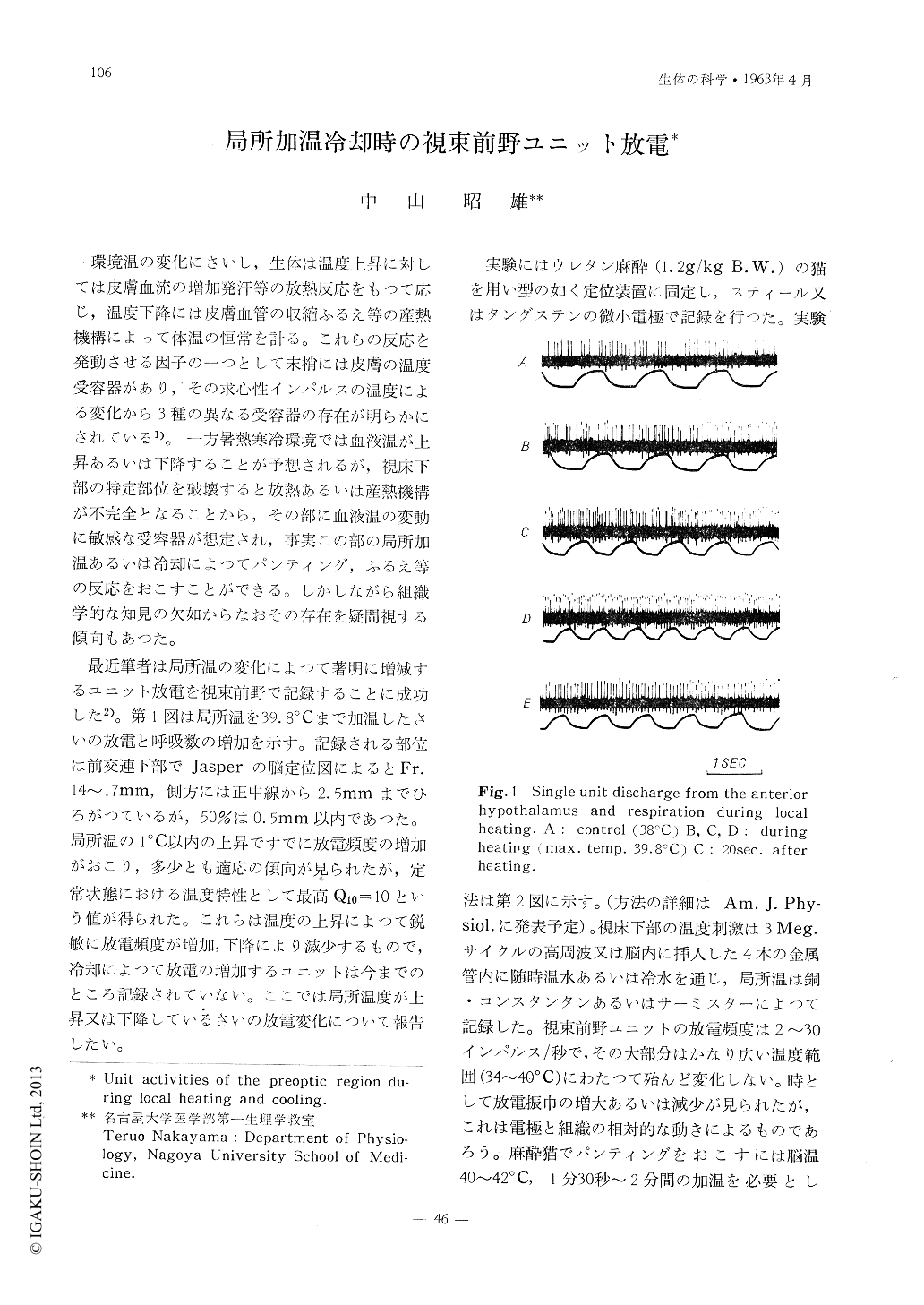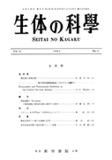Japanese
English
- 有料閲覧
- Abstract 文献概要
- 1ページ目 Look Inside
環境温の変化にさいし,生体は温度上昇に対しては皮膚血流の増加発汗等の放熱反応をもつて応じ,温度下降には皮膚血管の収縮ふるえ等の産熱機構によって体温の恒常を計る。これらの反応を発動させる因子の一つとして末梢には皮膚の温度受容器があり,その求心性インパルスの温度による変化から3種の異なる受容器の存在が明らかにされている1)。一方暑熱寒冷環境では血液温が上昇あるいは下降することが予想されるが,視床下部の特定部位を破壊すると放熱あるいは産熱機構が不完全となることから,その部に血液温の変動に敏感な受容器が想定され,事実この部の局所加温あるいは冷却によつてパンティング,ふるえ等の反応をおこすことができる。しかしながら組織学的な知見の欠如からなおその存在を疑問視する傾向もあつた。
最近筆者は局所温の変化によつて著明に増減するユニット放電を視束前野で記録することに成功した2)。第1図は局所温を39.8℃まで加温したさいの放電と呼吸数の増加を示す。記録される部位は前交連下部でJasperの脳定位図によるとFr.14〜17mm,側方には正中線から2.5mmまでひろがつているが,50%は0.5mm以内であつた。局所温の1℃以内の上昇ですでに放電頻度の増加がおこり,多少とも適応の傾向が見られたが,定常状態における温度特性として最高Q10=10という値が得られた。
A thermally sensitive unit has been located in the preoptic region. In this study, attention was focused upon the discharge pattern during rising and falling temperature.
1. The discharges of preoptic neuron increased and decreased gradually with a slow rise and fall of one tenth of a degree centigrade, respectively. In some units, discharges per sec. were proportional to changes of temperature only in a limited range and the unit kept fairly constant rate of firing regard'ess of further change of local temperature.
2. A unit was found in the preoptic region, the activity of which does not depend on the temperature level but is proportional to the rate of temperature change.
3. A paradoxical response was recorded at the beginning of rapid change of temperature. The discharge decreased at the very beginning of temperature rise. Similarly, but in an opposite way, a transient increase of discharge was observed during a fall in local tempe-rature.

Copyright © 1963, THE ICHIRO KANEHARA FOUNDATION. All rights reserved.


